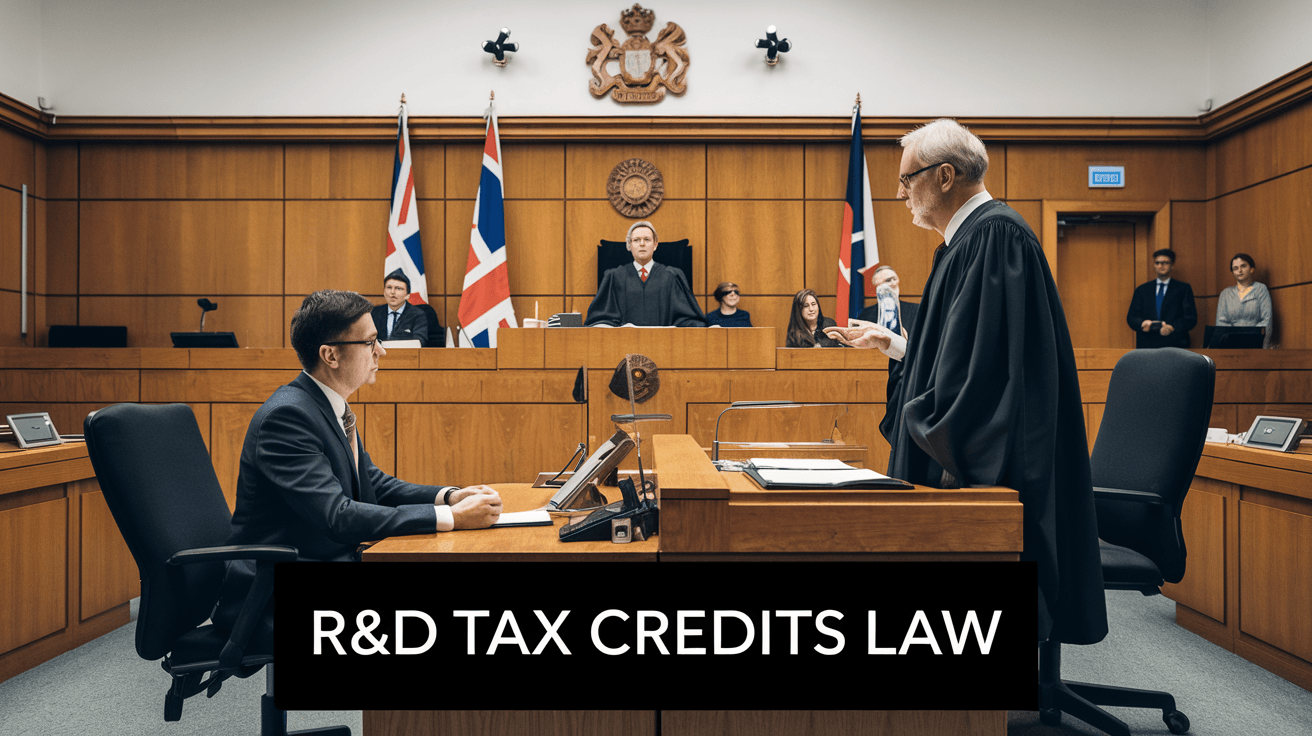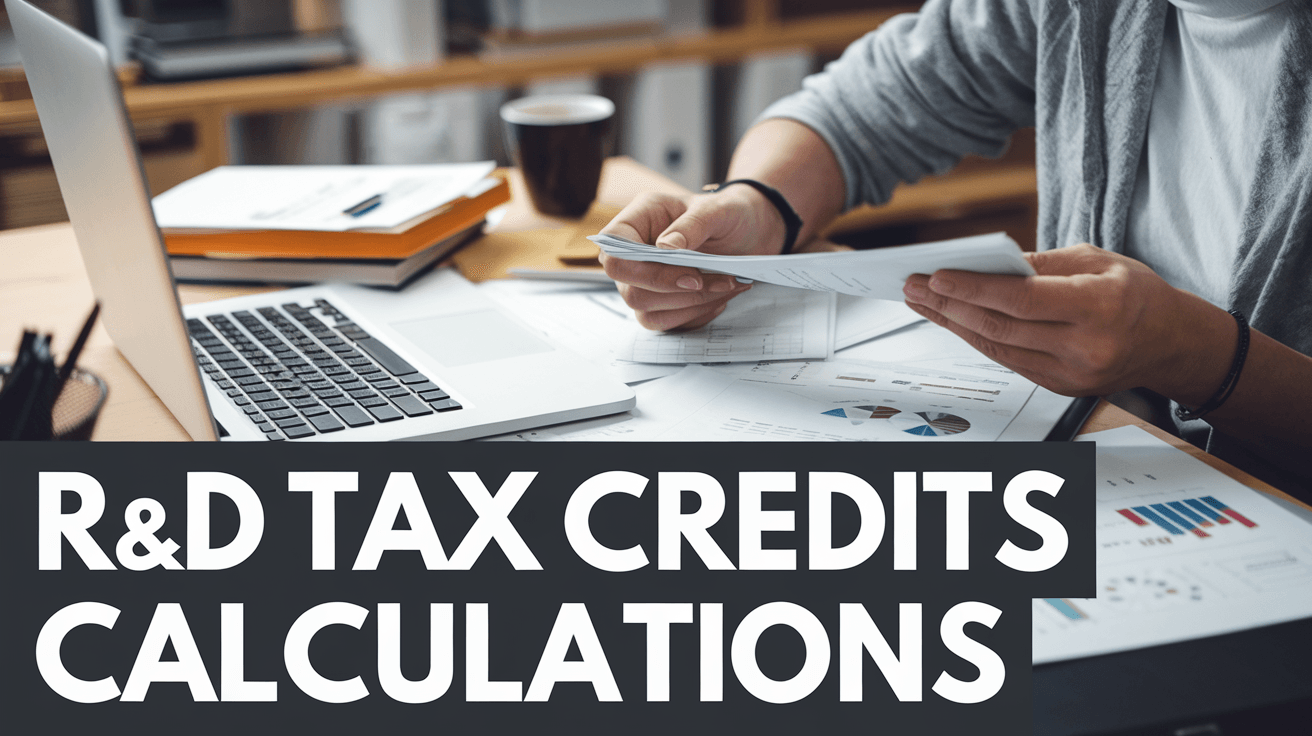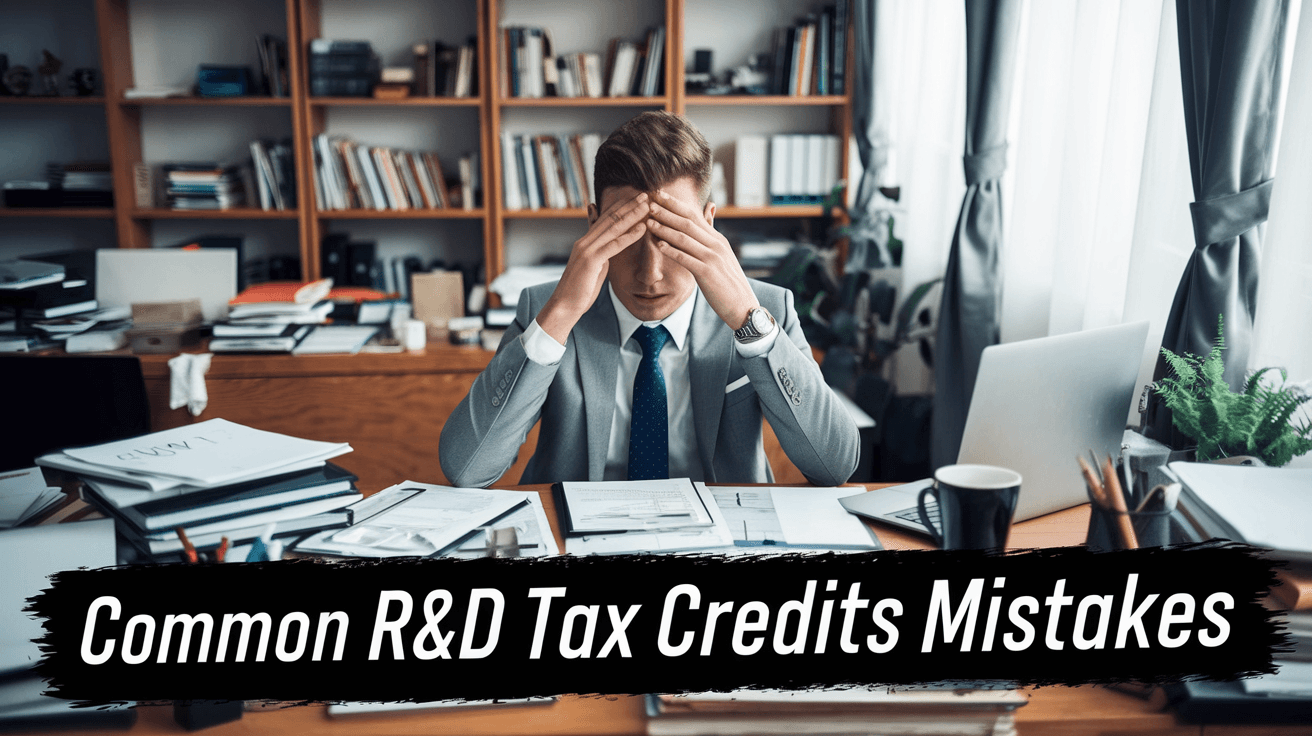R&D Tax Credits Bramhall Greater Manchester
R&D tax credits in Bramhall, Greater Manchester, are a valuable tax relief designed to encourage innovation among British businesses. These credits allow firms engaged in genuine research and development to reduce their corporation tax liability or receive a cash payment. For Bramhall businesses, this means they can reclaim a portion of their R&D expenditure, freeing up funds for further investment or to support the business during the development of new products and services.
To qualify, your project must aim to achieve an advance in science or technology, involve overcoming uncertainty, and address a problem that an experienced professional in the same field couldn’t resolve on their own. R&D Tax Credits UK can guide you through this process, ensuring you meet the eligibility criteria and maximize your claim. By claiming R&D tax credits, Bramhall businesses can gain a competitive edge in innovation, reduce their tax liability, and boost their cash flow, making them more attractive to investors and customers.

How Do R&D Tax Credits Benefit Bramhall Businesses?
R&D tax credits can significantly benefit Bramhall businesses by reducing their tax liability and boosting cash flow. These credits reward companies for investing in innovation, allowing them to retain more of their earnings.
Financial Advantages
R&D tax credits offer Bramhall businesses a dollar-for-dollar reduction in tax liability, which can lower their effective tax rate and improve their financial health.
This credit can be used to offset up to £500,000 of payroll taxes annually, providing an immediate cash infusion, especially crucial for startups and small businesses.
Competitive Edge in Innovation
By claiming R&D tax credits, Bramhall businesses can gain a competitive edge in innovation. The credits encourage investment in research and development, allowing companies to develop new or improved products, processes, and software. This can lead to increased efficiency, better product quality, and the ability to hire more developers or invest in better equipment, ultimately making the business more attractive to investors and customers.

Which Industries Commonly Claim R&D Tax Credits?
The R&D tax credit is not limited to a specific few industries; it is available to a wide range of sectors that engage in innovative activities. Companies from various industries can claim this credit to support their innovation efforts and reduce their tax liability.
Technology Sector
The technology and software development industry is a significant beneficiary of the R&D tax credit. Companies in this sector often qualify for the credit by developing new software, improving existing applications, and creating innovative technology solutions. For instance, activities such as integrating new and legacy systems, designing and testing hardware or software, and modifying existing systems to improve performance are all eligible.
Manufacturing
Manufacturing companies frequently claim the R&D tax credit due to their continuous efforts in product development and process improvement. Activities like designing, constructing, and testing prototypes, developing new construction or processing techniques, and addressing health, safety, and environmental concerns are all qualifying activities.
Life Sciences
The life sciences and pharmaceuticals industry is another major sector that benefits from the R&D tax credit. Companies in this field qualify by engaging in activities such as new drug development, creating medical devices, and advancing health technology. Documenting the research process, challenges, and solutions developed is crucial for claiming the credit.
Others
Beyond the more obvious industries, several other sectors also commonly claim the R&D tax credit. For example, architecture firms can qualify through environmental and certification testing, while food and beverage companies can claim credits for developing new product categories and improving existing products.
Additionally, industries such as aerospace and defense, engineering, and advanced materials also frequently claim the R&D tax credit for various innovative activities, including product development, process improvements, and technological advancements.

What Qualifies as R&D Under UK Tax Law?
To qualify as R&D under UK tax law, your project must be seeking an advance in science or technology by overcoming scientific or technological uncertainties. This advance must benefit the field overall, not just your business.
Qualifying Activities
Qualifying R&D activities involve projects that aim to achieve an advance in overall knowledge or capability in a field of science or technology. These activities must resolve scientific or technological uncertainties that are not readily deducible by a competent professional in the field.
- Advance in Science or Technology: This means improving the overall knowledge or capability in a scientific or technological field, not just your company's own knowledge or capability.
- Overcoming Uncertainties: The project must address uncertainties about whether something is scientifically possible or technologically feasible, and how to achieve it in practice.
- Eligible Costs: Qualifying costs include staff costs, subcontractor costs, materials and consumables, software licences, and certain data and cloud costs.
Excluded Activities
Activities that do not qualify for R&D tax relief include those that do not involve overcoming scientific or technological uncertainties.
- Non-Scientific/Technological Uncertainties: Work to overcome uncertainties that are not scientific or technological in nature does not qualify as R&D.
- Arts, Humanities, and Social Sciences: Projects in the arts, humanities, and social sciences (including economics) are not eligible for R&D tax relief.
- Commercial Innovation Alone: Simply developing innovative business products or services that do not incorporate an advance in science or technology does not qualify.
By understanding these criteria, you can determine whether your projects qualify for valuable R&D tax credits under UK tax law.

How Are R&D Tax Credits Calculated?
R&D tax credits are calculated based on the qualifying research and development expenditure of your company, with different schemes applying to small and medium-sized enterprises (SMEs) and larger companies. The calculation involves enhancing the qualifying expenditure and then applying the relevant tax relief rates.
SME Scheme
For SMEs, the calculation involves enhancing the qualifying R&D expenditure by 86% (reduced from 130% from 1 April 2023).
- If your company is profitable, you deduct the enhanced R&D expenditure from your taxable profits. For example, if you spent £100,000 on qualifying R&D, the enhanced deduction would be £100,000 x 186% = £186,000. This results in a corporation tax saving of £46,500 (assuming a 25% corporation tax rate).
- If your company is loss-making, you can surrender the loss for a cash credit. For instance, £100,000 x 130% = £130,000, plus the original £100,000, giving a total of £230,000. This can be surrendered for a cash credit of approximately 18.6% of the qualifying expenditure, which is £33,350.
RDEC Scheme
The Research and Development Expenditure Credit (RDEC) scheme is primarily for larger companies or SMEs that cannot use the SME scheme.
- Under RDEC, you can claim 20% of your qualifying R&D expenditure as a tax credit (increased from 13% from 1 April 2023). For example, if you spent £1,000,000 on qualifying R&D, the RDEC would be £200,000. This credit is provided as a cash payment, net of tax.
- The RDEC is added to your company’s taxable profit but reduces your corporation tax payable. For instance, if your corporation tax liability is £440,000, the RDEC of £60,000 would reduce this to £380,000.

What Are the Recent Changes to UK R&D Tax Credits?
The UK has introduced significant changes to its R&D tax credit system, effective from April 2023 and April 2024, aimed at simplifying the process, reducing fraud, and aligning with international standards. These changes impact both the rates of relief and the eligibility criteria for R&D tax credits.
Policy Updates
- RDEC Rate Increase: The Research and Development Expenditure Credit (RDEC) rate has increased from 13% to 20% for expenditure incurred on or after 1 April 2023.
- SME Relief Changes: The SME additional deduction has decreased from 130% to 86%, and the SME credit rate has reduced from 14.5% to 10% for loss-making entities.
- R&D Intensive SME Relief: A new scheme for R&D-intensive SMEs, where qualifying R&D expenditure is 40% or more (reduced to 30% from April 2024) of total expenditure, offers a 14.5% credit rate, increasing to 27% for loss-making companies.
- Digital Submission and Detailed Reporting: All R&D claims must now be submitted digitally, include detailed project and cost information, and be endorsed by a senior officer of the company.
- Subcontracting and Overseas Costs: Overseas costs for externally provided workers, subcontractors, and contributions to independent R&D are no longer eligible, except where it is unreasonable to replicate the conditions in the UK.
- Merged RDEC Scheme: From April 2024, the SME and RDEC schemes are being merged into a single RDEC-like scheme with a 20% credit rate, applicable to all companies.
Impact on Businesses
- Simplified Process: The changes aim to simplify the R&D tax relief landscape by bringing most claims under a single merged scheme, making it easier for businesses to navigate and claim R&D tax credits.
- Increased Scrutiny: Businesses will face higher scrutiny on their R&D claims, with mandatory digital submission and detailed reporting requirements to combat fraud and errors.
- Financial Impact: The increased RDEC rate and the new R&D intensive SME relief can provide significant financial benefits to businesses, especially those with high R&D expenditure. However, the reduced SME relief rates may affect some businesses negatively.
- Compliance Adjustments: Companies need to adjust their accounting and reporting practices to comply with the new requirements, including notifying HMRC in advance if they intend to claim R&D tax relief for the first time.

How Can Bramhall Businesses Apply for R&D Tax Credits?
To apply for R&D tax credits, Bramhall businesses need to follow a specific process and gather the necessary documentation to support their claims. Here’s a step-by-step guide to help you through the process.
Application Process
- Identify Qualified Activities: Determine which of your business activities qualify for the R&D tax credit. These typically include designing, developing, or improving products, processes, software, techniques, formulas, or inventions.
- Calculate Qualified Expenses: Calculate the qualified research expenses (QREs) incurred during the tax year. This includes salaries, supplies, contract research, and cloud hosting related to R&D activities.
- Choose the Credit Method: Decide whether to use the Regular Research Credit (RRC) or the Alternative Simplified Credit (ASC) method. The IRS recommends calculating the credit using both methods and choosing the one that results in the greatest tax benefit.
- Complete Form 6765: Fill out Form 6765, Credit for Increasing Research Activities, and submit it with your business’s federal income tax return. This form includes sections for the regular credit, alternative simplified credit, additional forms and schedules, and payroll tax election for qualified small businesses.
- Submit Supporting Documentation: Ensure you have thorough documentation to back up your R&D tax credit claim. This includes financial records, business records, and technical documents.
Required Documentation
- Financial Records: Keep detailed records of all expenses related to R&D activities, including payroll records for employees involved in R&D, receipts for supplies and equipment, and contracts with third-party partners.
- Business Records: Maintain records of project and meeting notes, blueprints, patents, designs, drawings, and prototypes related to the research activities.
- Technical Documents: Ensure you have comprehensive descriptions of your research activities and how they meet the IRS’s four-part test: permitted purpose, technological in nature, elimination of uncertainty, and process of experimentation.
By following these steps and ensuring you have the necessary documentation, Bramhall businesses can effectively apply for and claim R&D tax credits, potentially reducing their tax liability and boosting their financial performance.

What Common Mistakes Should Be Avoided When Claiming?
When claiming VAT or submitting tax returns, it is crucial to avoid common mistakes that can lead to penalties, delays, or incorrect tax liabilities. Here are some key areas to focus on:
Overclaiming
Overclaiming occurs when you reclaim VAT on ineligible expenses or claim more than you are entitled to. For instance, HMRC does not allow you to reclaim VAT on personal expenses or on items that are zero-rated or VAT-exempt, such as certain property transactions or membership dues.
Underclaiming
Underclaiming happens when you fail to claim the full amount of VAT you are eligible for. This can occur if you are unaware of all the expenses you can claim, such as fuel for business travel or specific business-related purchases. Ensuring you keep accurate records and understand what expenses are allowable can help you avoid underclaiming.
Documentation Errors
Documentation errors are a common pitfall when claiming VAT. You must produce evidence in the form of a VAT invoice to reclaim VAT on any business expense. HMRC requires accurate and complete records, including mileage logs for fuel claims and certified import VAT certificates (C79) for import VAT claims. Failure to provide these documents can result in your claim being rejected.

How Can Professional Advice Enhance R&D Tax Credits Claims?
Professional advice can significantly boost your R&D tax credits claims by ensuring you meet all the eligibility criteria and maximize your claim amount. Experts in R&D tax credits can guide you through the complex process, helping you avoid common pitfalls and comply with HMRC regulations.
Role of Tax Credit Specialists
Tax credit specialists play a crucial role in the R&D tax credits process. Here are some key aspects of their role:
- Assessing Eligibility: They determine whether your projects qualify for R&D tax relief by evaluating if they seek to achieve an advance in science or technology and overcome scientific or technological uncertainties.
- Identifying Qualifying Expenditure: Specialists help identify the costs that can be claimed, including staff costs, subcontractor fees, and consumables related to the R&D project.
- Calculating Claims: They calculate the enhanced expenditure and tax credits, ensuring you claim the maximum amount you are eligible for. For SMEs, this can include up to 33% of qualifying expenditure before April 1, 2023, and up to 27% for R&D intensive SMEs after this date.
- Ensuring Compliance: Tax credit specialists ensure that all claims are compliant with HMRC guidelines, reducing the risk of HMRC enquiries and potential penalties.
- Submitting Claims: They assist in preparing and submitting the necessary documentation, including claim notification forms and additional information forms required by HMRC.
Benefits of Expert Guidance
Expert guidance in R&D tax credits offers several benefits:
- Maximized Claims: Specialists can help you claim the maximum amount possible, which can significantly reduce your corporation tax bill or provide a cash credit if you are loss-making.
- Reduced Risk: By ensuring compliance with HMRC regulations, you minimize the risk of claims being rejected or facing additional scrutiny.
- Time Efficiency: Letting experts handle the process saves you time and allows you to focus on your core business activities.
- Tailored Strategies: Specialists can develop a tailored strategy for your business, taking into account your specific sector, project details, and financial situation.
By leveraging professional advice, you can navigate the complexities of R&D tax credits more effectively and ensure you receive the full benefits available to your business.
In Conclusion
R&D tax credits in Bramhall, Greater Manchester, are a valuable incentive for businesses to invest in innovation and research. These credits, designed by the UK government, allow companies to reduce their corporation tax bills or receive a cash payment, thereby freeing up funds for further investment and business growth.
For Bramhall businesses, claiming R&D tax credits can be a game-changer, providing a significant financial boost. Whether you are in the technology sector, manufacturing, life sciences, or other innovative fields, these credits can help you offset the costs of developing new products, processes, or services. The eligibility criteria, though nuanced, are clear: your project must aim to achieve an advance in science or technology, involve overcoming uncertainty, and address a problem that an experienced professional in the same field couldn’t resolve on their own.
To maximize your benefits, it is crucial to work with R&D Tax Credits UK, specialists who can guide you through the complex process of identifying qualifying activities, calculating eligible costs, and ensuring compliance with HMRC regulations. By leveraging their expertise, you can avoid common pitfalls, ensure your claims are accurate and complete, and receive the full financial benefits you are entitled to.
Don’t miss out on the opportunity to reduce your tax liability and boost your cash flow. Contact R&D Tax Credits UK today to discuss your eligibility and start the process of claiming your R&D tax credits. With their help, you can turn your innovative efforts into tangible financial gains, driving your business forward and enhancing your competitive edge in the market.

